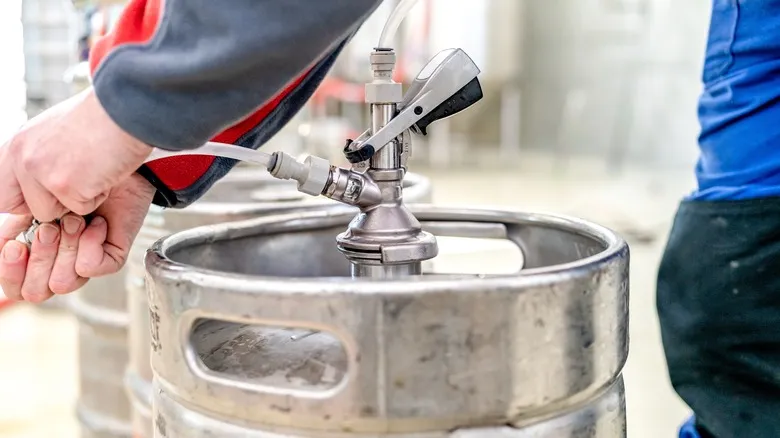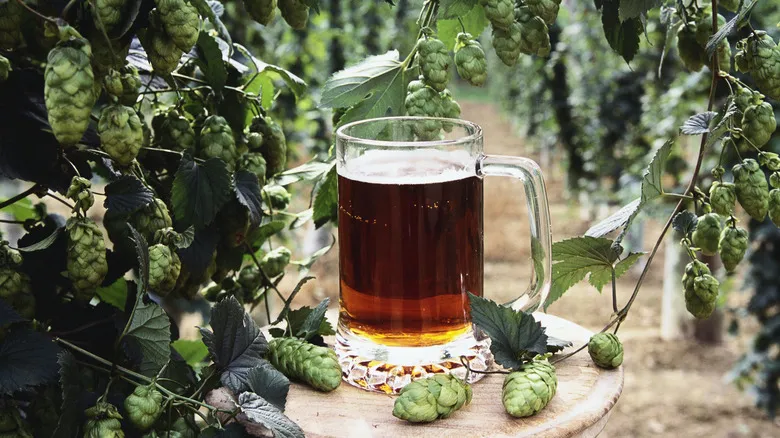Beer's bitterness arises from hops and a few smaller contributions

The main source of bitterness in beer is alpha acids, a type of terpene found in hops. These acids naturally occur in the resin glands of the hop plant, and their flavor becomes more pronounced the longer they are boiled in the wort. Consequently, hops rich in alpha acids are typically added at the beginning of the boiling process, with brewers carefully choosing the type and amount to achieve the desired level of bitterness.
The freshness of alpha acids is crucial; exposure to direct sunlight can lead to a skunky flavor in the beer, and over time, these acids may lose their potency. While alpha acids are present in all beers, they are not the only source of bitterness. Other terpenes in specific hop varieties also contribute to this characteristic. For instance, limonene, found in amarillo, chinook, and centennial hops, imparts a bitterness akin to citrus peel.
The complexity increases with the addition of other ingredients. Darkly roasted malts can produce burnt, bitter flavors, which are noticeable in darker beer styles like stouts. The taste of alcohol can also lend a bitter sensation, particularly in stronger brews. Additionally, the mineral content of the water used in brewing can influence the overall bitterness of the beer.
Bitter beer flavors and the IBU scale differ

The line between light and dark beer can be quite ambiguous, much like the relationship between beer and bitterness. For instance, there exists a specific beer style known as "bitter," which is a low-alcohol English brew that is flavorful yet not overly hoppy. The situation becomes even more complex with the IBU scale, or International Bitterness Units, designed to classify the bitterness levels in beer.
Developed in the 20th century, this system aims to measure a beer's bitterness in a clear-cut manner. The IBU value reflects the concentration of alpha acids and other compounds that contribute to bitterness on a defined scale. While this scale is useful for categorizing beers—illustrating the contrast between a lager and a hop-heavy IPA—it fails to capture the subtleties of flavor. A beer with a low IBU can still taste bitter if its alpha acids are pronounced, while a beer with a high IBU may have a rich malt profile that softens the perceived bitterness. Thus, although hops are the primary source of bitterness, they interact with various other ingredients in intricate ways.
Recommended

These Are The Sweetest And Driest Red Wines You Can Drink

How Long Does A Keg Last Once It's Been Tapped?

What Is Domestic Beer, And How Is Craft Beer Related?

The Right Way To Hold A Wine Glass For The Uninitiated
Next up

